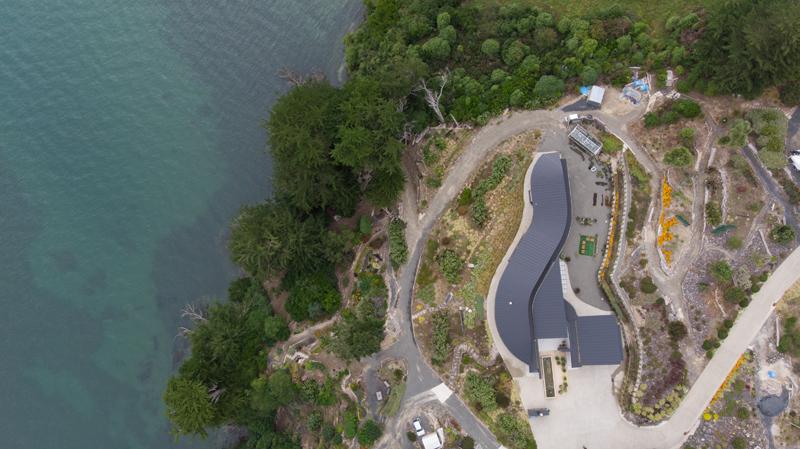An eel-like long, slim southern home

Two architects with complementary practices joined forces with a Dunedin client to achieve an enjoyable and collaborative solution for an ambitious design project on the Roseneath Peninsula.
The site provided significant challenges. The urban fringe location between Port Chalmers and Dunedin City was on a south-sloping, harbour’s edge site with panoramic views from the south east to the south west over the Otago inner harbour from the end of the Roseneath Peninsula.
Key design constraints were consent and visual character, impact and excavation limitations along with the range of Otago climatic conditions over a season, the house’s long design life, site access and circulation and settling a building on the site in the context of resource consent limitations.
Clients Norman Evans and Sharon Chappelow were explicit in their requirement for a “habitat”, single level home or, as architect Mark Southcombe commented: “Their expansive everyday use was not to be compromised for visitors or ‘conventional expectations’ of house.
Architects
The concept for this collaborative project between an innovative Project Manager with a PhD in entrepreneurship and two architects with complementary practices was initiated at a weekend long workshop with the clients. Norman had provided the design team with a 28-page brief of what he wanted to achieve in the home including the request for the home not having any straight lines. When seen from the harbour, the long, low house tactic enables a low profile – a house that hunkers down into the site, minimising visual impact and easing a tricky resource consent.
Norman had bought the site for the home in 2012 and lived in a cabin on the land for six years so was familiar with many challenges that awaited the design team of Mark Southcombe and David Smith. “Our vision was of a sinuous line – an eel-like, long south facing house that reinforces a curving landscape contour at the specific moment the slope eases”, they recall.
“The idea choreographs different views of the landscape panorama from within the house, allows unconventional room to room to room planning and creates exterior north and east facing courtyards. The planning celebrates domestic ritual and informality of use, blurring public and private spaces; it is highly functionally specific although its planning could not be more different to convention”.
As a breeder of tropical fish, Norman’s aquaria and central fish workroom are located in the middle of the house posing as a “rock” within a stream of enfilade spaces flowing together along the site. A library is included, a room serving as Sharon’s private retreat and she has a conservatory for her plants. A small and intimate lounge opens into the conservatory so there is extra space available when there’s a crowd.
Construction
Locally-sourced, simple, robust materials are combined to balance economy, architecture and sustainability. The house consists of a simple, cross-section of three narrow clerestories with flat roof sections varied across and along the contours to scoop the available sun, create light-filled, passively heated volumes and enable simple construction. Construction uses standard details such as an insulated ground concrete slab and 140 light timber with integral steel frames where required.
Organic double curvature has been resolved spatially and geometrically through a series of simple, curved walls with truncated radial roof planes to create the impression of double curvature at the ends of the “eel”. The roof planes comprise Colorcote Alumigard in Dimond Roofing's Eurotray® Roll Cap to beautifully accommodate the unique radial design features.
Although homeowner Norman has been involved in house renovations and extensions of properties in the past, the Roseneath home is his first build and as project manager and contract administrator he has marvelled that the completed house is exactly what he envisaged.
The architectural combination comprised Southcombe Architects, responsible for feasibility, conceptual and developed design and David Smith Architects responsible for detail design, contract documentation and building consent.


